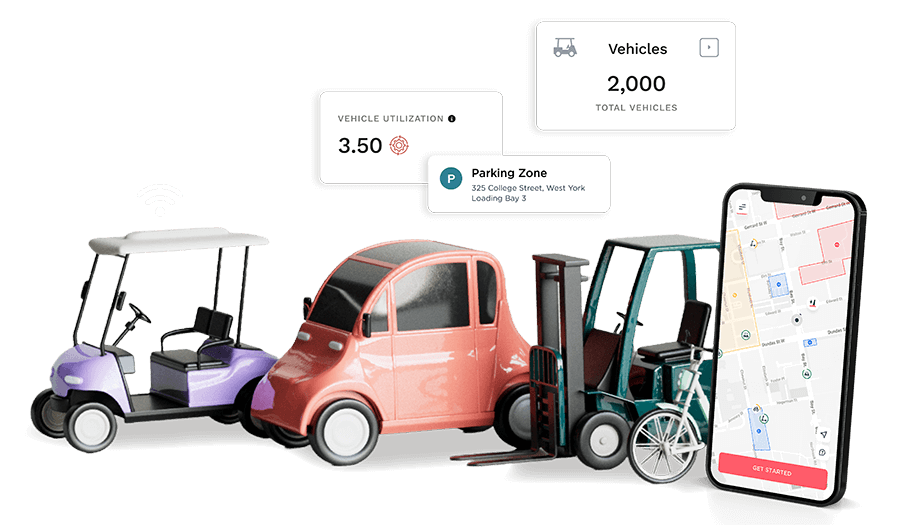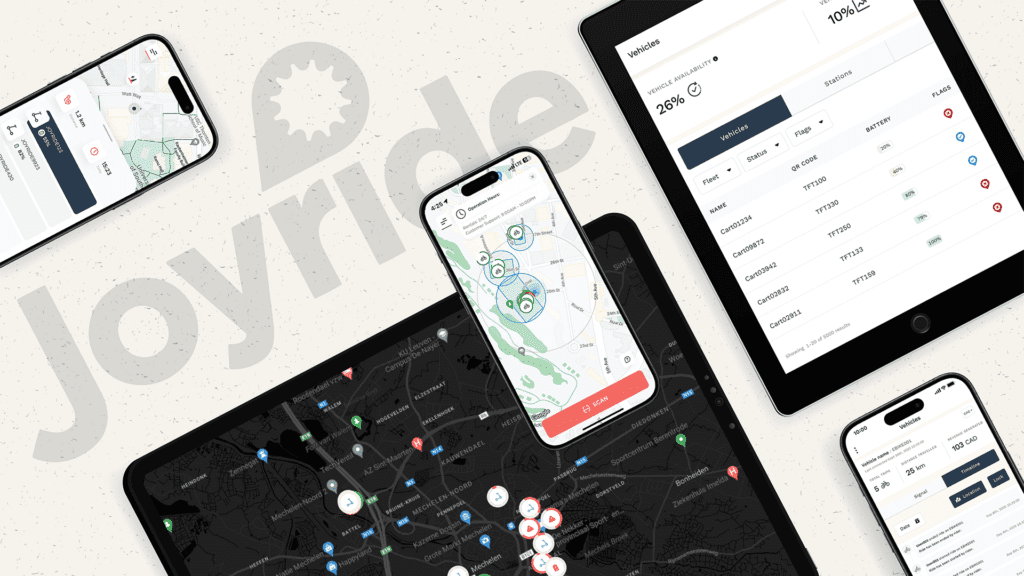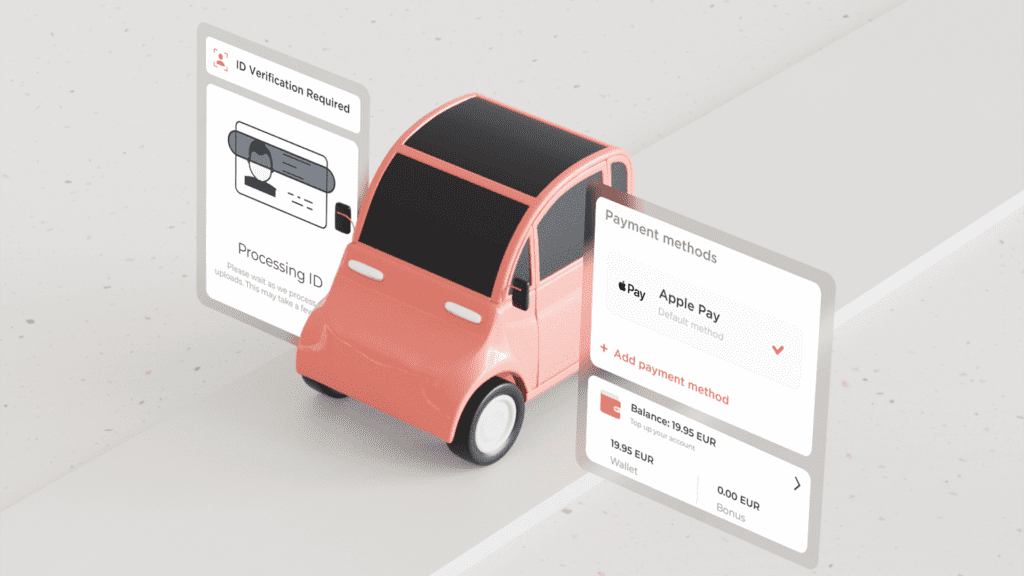Don’t overlook the power of parking. When a shared scooter or bike trip comes to its end, your micromobility fleet has the ability to offer parking through docking stations, a free-floating dockless model, or a hybrid model using both options. Choosing which route to take is a crucial decision for your micromobility business, since these models determine how your hardware will be managed and tracked in your operations.
Docking stations, also known as charging hubs, are becoming increasingly popular as the micromobility industry continues to grow. They offer a great solution to keeping your municipal government happy, as they organize and charge your hardware when vehicles are not in use. But don’t discount dockless just yet–there are pros to this tried and true trend.
When deciding which model fits your business, try answering these three things:
- Will X model comply with your municipality’s laws?
- Is your insurance going to support this model?
- Does this model fit your short- and long-term budget?
Let’s define the docking, dockless and hybrid fleets to give you a better idea of how they best fit your business needs.
Fleets with docking stations
In a micromobility fleet, whether comprised of e-scooters or e-bikes, you can provide a “drop-off” location known as a docking station. Essentially, your customers can rent and return vehicles to a specific destination once they’ve completed their journeys.
Advantages:
- Docking stations provide a more secure solution for fleets ensuring a safe place for them to be stored. Keeping your municipality tidy, as vehicles aren’t lying on the ground or left in obscure places.
- Many docking stations have automatic charging capabilities, so you don’t have to do so manually.
- If your city does not allow free-floating fleets, this is how you can abide by the rules and build a micromobility business without hitting many roadblocks.
- Insurance providers typically like docking stations and will provide significantly lower premiums.
- A rider can rent the vehicle easily and has a secure place to pick-up and drop-off.
Things to consider:
- They are an investment; docking stations have upfront costs for installation but will ultimately save you money in the long run.
- Finding locations to install the infrastructure for these large stations can be difficult.
- This model needs additional integrations with your fleet. When a vehicle is brought to a docking station, the hardware needs to click into the mechanism to lock. Software integrations are required for the station and hardware to communicate. Locking the vehicle will prevent it from being taken and will often charge the hardware automatically. To unlock the hardware, the rider needs to scan a QR code which will communicate to both the app and station to release the vehicle. Finding a Whitelabel App like Joyride that is compatible with your docking station is integral to maximize these benefits.
Joyride partners such as Swiftmile, DUCKT and KUHMUTE are excellent examples of companies that help micromobility businesses implement docking stations efficiently across the globe. While their offerings vary, they all provide guidance and solutions to cities that don’t like “free-floating” vehicles. Learn more about our partnering docking stations in Joyride’s free Micromobility Hardware Brochure.
Dockless micromobility fleets
A dockless model is also known as a “free-floating” fleet. The idea behind this model is that your customer can leave his or her vehicle anywhere in the city that meets your geofencing parameters. As a result, riders have complete freedom when utilizing their e-scooters or e-bikes, and they don’t have to worry about returning them directly to the business. Typically this gives companies the option to either hire staff to collect and recharge the fleet or get contractors to do it.
Advantages:
- Dockless fleets are a great way to get started at a lower cost using geofenced parking zones.
- They are convenient for customers as they only have to think about their destination, not where they have to leave the vehicle once their ride is over.
Things to consider:
- This model has less reliable security as vehicles are floating freely within the parking zones.
- Free-floating e-scooters or e-bikes can create obstacles for other pedestrians if left in obscure places.
- Vehicle batteries are at a higher risk of dying (which will disable vehicle tracking).
- There are higher insurance costs due to increased risk.
- This fleet type will encourage more maintenance and field staff to maintain the fleet.
Hybrid fleets
A hybrid fleet is, of course, a mix of docking and dockless models. Utilizing a hybrid model is an excellent compromise if you’re starting out, since it keeps your overhead costs low and gets better premiums with insurance providers. The idea behind a hybrid model is to have a few docking stations, but if someone is far from it, they can leave the vehicle in the geofencing parameter to be picked up by a staff member.
Advantages:
- More cost-effective solution to progressively add more docking stations to your fleet.
- Docking stations are used in conjunction with Geofenced Parking Zones in the hybrid model.
- It’s a good way to test how the market will respond to the docking stations.
Things to consider:
- You will need to hire staff to collect vehicles and ensure the hardware is charged.
- It could be confusing to customers on what to do with the vehicles when the ride is completed if you don’t properly communicate the hybrid options.
- Costs can run high if not properly analyzed. If you’re considering a hybrid model, you must understand your budget to see if it’s worth having the integration or hiring more staff. When done correctly, you can save money!
How to get started
Joyride’s Docking Station feature supports fully docked models or hybrid ones. We also provide a Docking Station API for those who want to build the hardware in-house. How does our in-app and backend Docking Station feature work?
- Users open our white-label app and locate a docking station nearby that shows the number of vehicles and free ports available
- Once the vehicle’s QR code is scanned, the dock opens, vehicles unlock and start moving
- When the vehicle docks, the ride automatically ends. If people try to end the ride without docking, a display message will prompt them to find the nearest station.
If you want additional guidance on how to get started with your micromobility business—from full start to stop—contact our sales team today. We can support your understanding of hardware as well as integration options with Joyride’s software platform.







